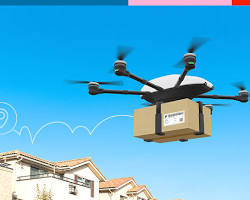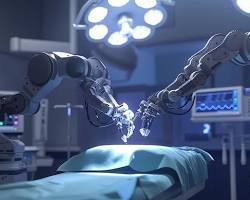Artificial Intelligence and robotics have seen unprecedented growth in recent years in the world, revolutionizing industries and reshaping the fabric of modern society. From healthcare and education to manufacturing and entertainment, the integration of these technologies is driving innovation and efficiency at an unparalleled scale. This Shows the current trends, impacts, and challenges associated with the rise of AI and robotics, illustrating how they are shaping our present and future.
The Evolution of AI and Robotics
The journey of AI and robotics began decades ago with early computer systems and mechanical prototypes setting the stage for today sophisticated technologies. Alan Turing foundational work in the 20th century laid the groundwork for AI, while the development of robotic systems in industries like automotive manufacturing demonstrated the potential for automation. Advances in computing power, data availability, and algorithm design have since accelerated progress, bringing us to an era where intelligent machines are no longer confined to science fiction.
AI now encompasses a range of capabilities, from natural language processing and machine learning to computer vision and predictive analytics. Similarly, robotics has evolved beyond assembly lines, finding applications in autonomous vehicles, surgical procedures, and even household chores.
Applications Across Industries
- Healthcare: AI and robotics are revolutionizing healthcare by enhancing diagnostics, streamlining administrative tasks, and improving patient care. Machine learning algorithms analyze medical data to detect diseases such as cancer at early stages, while robotic-assisted surgeries offer greater precision and reduced recovery times. Telemedicine platforms powered by AI are bridging gaps in access to healthcare, particularly in remote areas.

A drone delivering packages to a doorstep: This image showcases the potential of AI and robotics to revolutionize the delivery industry
A robotic arm performing surgery with precision: This image demonstrates the potential of AI and robotics to revolutionize healthcare and improve patient outcomes.

- Manufacturing: In manufacturing, robots have long been used for repetitive and dangerous tasks. Today, advanced robotics and AI systems enable predictive maintenance, quality control, and supply chain optimization. Collaborative robots, or “cobots,” work alongside humans to improve efficiency and safety on factory floors.
- Education: AI-driven tools are transforming education by providing personalized learning experiences. Intelligent tutoring systems adapt to individual learning styles and paces, while robots like NAO and Pepper are being used as teaching assistants in classrooms. These technologies aim to make education more accessible and inclusive.
- Entertainment: The entertainment industry is leveraging AI for content creation, recommendation systems, and immersive experiences. AI-generated music and art, coupled with robotics, are expanding the boundaries of creativity, offering unique experiences to audiences worldwide.
- Transportation: Autonomous vehicles, drones, and delivery robots are at the forefront of transforming transportation. Self-driving cars equipped with AI systems promise safer roads, while drones are revolutionizing logistics and emergency response.
- Artificial Intelligence: AI refers to the simulation of human intelligence in machines. Key developments include:
- Machine Learning (ML):
Algorithms that enable systems to learn and improve from experience without explicit programming.
- Natural Language Processing (NLP):
AI that understands and generates human language, powering virtual assistants like Siri and Alexa.
- Computer Vision:
Technology that allows machines to interpret and analyze visual data.
- Robotics: Robotics combines engineering, electronics, and computer science to design machines that can perform physical tasks. Recent innovations include:
- Humanoid Robots: Robots designed to resemble and interact like humans, such as Boston Dynamics Atlas.
- Collaborative Robots: Robots that work alongside humans in industrial settings.
- Autonomous Systems: Self-operating robots, including drones and autonomous vehicles.
Due to Rise of AI and Robotics Societal Impacts how?
The rise of AI and robotics brings numerous benefits, including increased efficiency, cost savings, and enhanced quality of life. However, it also raises significant societal and ethical concerns:
- Job Displacement: Automation threatens to replace certain jobs, particularly those involving routine tasks. While new roles are emerging, the transition requires upskilling and reskilling of the workforce.
- Ethical Dilemmas: The deployment of AI in decision-making processes raises ethical questions about bias, transparency, and accountability. Ensuring that AI systems operate fairly and without prejudice remains a critical challenge.
- Privacy Concerns: AI’s reliance on vast amounts of data raises concerns about privacy and data security. Striking a balance between innovation and protecting personal information is crucial.
- Dependence on Technology: Increased reliance on AI and robotics could lead to overdependence, with potential risks in case of system failures or cyberattacks.
Challenges and Opportunities and Hurdles
The widespread adoption of AI and robotics faces several hurdles, including
- Technical Challenges: Developing reliable and generalizable AI systems remains a complex task. Issues like data quality, algorithmic bias, and computational limitations need to be addressed.
- Regulatory and Legal Frameworks: Governments and institutions must establish robust frameworks to govern AI and robotics, ensuring ethical use and mitigating potential risks.
- Social Acceptance: Public perception and trust play a vital role in the adoption of these technologies. Transparent communication and education are essential to dispel myths and address concerns.
Despite these challenges, the opportunities presented by AI and robotics are vast. Innovations in healthcare, renewable energy, and environmental monitoring have the potential to address pressing global issues such as climate change and resource scarcity. Furthermore, AI-driven insights can support decision-making in policy, business, and humanitarian efforts.
The Future of AI and Robotics
The future of AI and robotics is brimming with possibilities. Advancements in quantum computing, neural networks, and human-machine interfaces promise to unlock new capabilities. Collaborative AI systems that augment human skills rather than replace them will likely become more prevalent, fostering harmonious coexistence.
Education and public awareness will be pivotal in ensuring that society adapts to the changes brought by AI and robotics. Governments, industry leaders, and educators must work together to promote inclusive policies and equitable access to technology.
Summarize:
The rise of AI and robotics is undoubtedly one of the most transformative phenomena of our time. As these technologies continue to evolve, they hold the promise of solving complex challenges and enriching human lives. However, their integration into society must be guided by thoughtful planning, ethical considerations, and a commitment to the greater good. By embracing the opportunities and addressing the challenges, humanity can harness the full potential of AI and robotics to build a brighter future.
For more interesting articles, please visit our blog: https://techvibezonline.com


